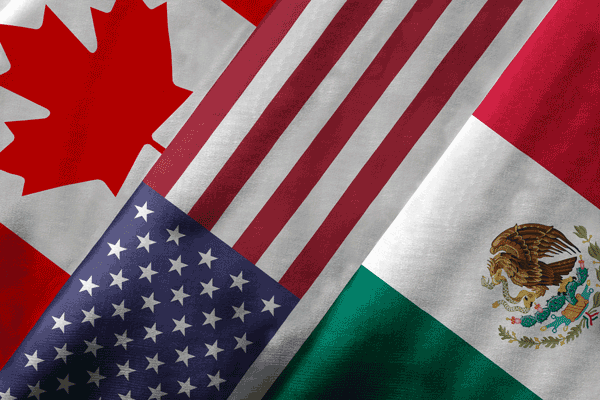 The California Chamber of Commerce is urging members to join the coalition of more than 300 state and local chambers from across the United States in asking President Donald Trump to support efforts to modernize the North American Free Trade Agreement (NAFTA).
The California Chamber of Commerce is urging members to join the coalition of more than 300 state and local chambers from across the United States in asking President Donald Trump to support efforts to modernize the North American Free Trade Agreement (NAFTA).
The coalition sent a letter to the President this week in support of modernizing NAFTA.
Trade with Canada and Mexico, the top U.S. export markets, supports 14 million American jobs, including tens of thousands of jobs in every state and more than 100,000 in 35 U.S. states. Each day, more than $3.3 billion, or $1.2 trillion annually, is traded between the United States, Canada and Mexico. In fact, half of all Canadian and Mexican imports are “made in the USA.”
NAFTA has been especially beneficial for U.S. farmers and ranchers. Agricultural exports to Canada and Mexico have quadrupled from $8.9 billion in 1993 to $38 billion in 2016, generating big benefits for rural America. In addition, Canada and Mexico are the top two markets in the world for U.S.-made manufactured goods, with purchases of nearly half a trillion dollars last year—more than the next 10 largest markets combined.
Our North American neighbors also are booming markets for U.S. services exports. In fact, the United States last year recorded a trade surplus of $11.9 billion with its NAFTA partners when manufactured goods and services are combined. Among the biggest beneficiaries of this commerce are America’s small and medium-sized businesses, 125,000 of which sell their goods and services to Mexico and Canada.
Mexico
Mexico continues to be California’s No. 1 export market, purchasing 16.2% of all California exports. California exports to Mexico amounted to $25.262 billion in 2016, a slight decrease from 2015.
Computers and electronic products remained California’s largest exports, accounting for 21.7% of all California exports to Mexico. Exports of transportation equipment and machinery from California to Mexico grew to total over $5.1 billion; with chemicals continuing to be a strong export sector as well.
Canada
Canada remained California’s second largest export market, with California exports to Canada increasing to over $16.18 billion in 2016. Canada purchases more than 10% of all California exports.
Computers and electronic products remained California’s largest exports to Canada, accounting for over 30% of all California exports to Canada. California exports to Canada directly and indirectly support approximately 110,000 jobs in California, with many of those resulting from export growth under NAFTA.
NAFTA
CalChamber understands that the NAFTA was negotiated more than 25 years ago, and, while our economy and businesses have changed considerably over that period, NAFTA has not. We agree with the premise that the United States should seek to support higher-paying jobs in the United States and to grow the U.S. economy by improving U.S. opportunities under NAFTA.
The CalChamber actively supported the creation of the NAFTA. Its long-standing support for NAFTA is based upon an assessment that the agreement serves the employment, trading and environmental interests of California and the United States, as well as Canada and Mexico, and is beneficial to the business community and society as a whole. Since 1993, trade among the three NAFTA countries has nearly quadrupled.
The CalChamber now urges a quick and efficient process, and one that does not hinder ongoing trade and investment among the three NAFTA members, who must be kept united in the same end-goal of a successful renegotiation. Throughout this process, the Trade Promotion Authority with its objectives and procedures should be followed.
The goals of NAFTA are to eliminate trade barriers and facilitate movement of goods and services across borders, promote fair competition, increase investment opportunities, provide protection and enforcement of intellectual property rights, create procedures for trade disputes, and establish a framework for further trilateral, regional and multilateral cooperation to expand the trade agreement’s benefits.
NAFTA, the original document, is more than 1,700 pages long, with 741 pages belonging to the treaty itself, 358 pages for annexes, and 619 for footnotes and explanations. The treaty is separated into eight parts: General; Trade in Goods; Technical Barriers in Trade; Government Procurement; Investment, Services and Related Matters; Intellectual Property; Administrative and Institutional Provisions; and Other Provisions. These eight parts are made up of 22 chapters, with an additional seven annexes. With the current negotiations, new chapters are being formulated.
Action Needed
CalChamber is encouraging members to send a letter to President Trump, urging him to support the modernization of NAFTA.

